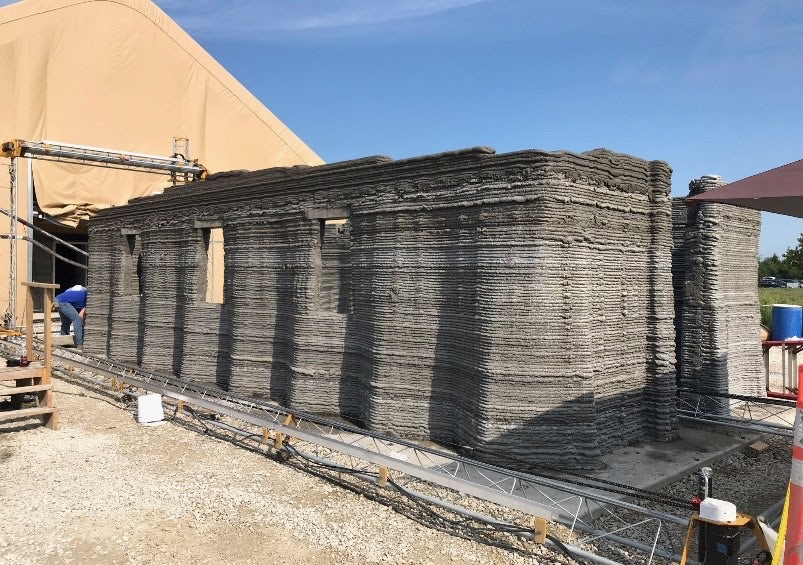
3D printing, often referred to as Additive Manufacturing (AM) is the sequential layering of materials using computers to create three-dimensional shapes. The process appears relatively simple as a 3D digital model of the item is created. This is done either through computer aided design (CAD) or using a 3D scanner.
The printer reads the design and “prints” successive layers of a medium, either liquid, powder, or sheet material. These are joined together or fused to create the final product or item. While the 3d printing process can sometimes be slow, it can create almost any shape which is particularly useful for geometrically complex components.
The future of construction lies with robots getting down and dirty while implementing 3D printing technology. And now, 3D printing has found yet another purpose with the US military building barracks using a large 3D printer.
3D Printing For The Military
When we look at the applications of 3d printing, the military certainly seems like a great fit. Considering the dangers of battlefield construction, why not get a machine to build while troops take care of business? In addition to deploying this technology for military operations, it is ideal for humanitarian aid and relief missions. These 3D printed structures could even help re-house people who are in need much faster than conventional buildings.
Recently, the US Marine Corps Systems Command (MCSC) constructed a prototype barracks using “the world’s largest 3D printer”. The structure is made out of concrete and construction took less than two days. If you think that is fast, they are doing more research to see if they can refine the process further. The aim is to implement the technology in the field and to reduce construction time to only one day. There is a suggestion to automate the pumping and mixing of cement which could significantly speed up the process. Here is another interesting article on 3D printed houses that were completed in a single day.
The benefits of such technology is clear and obvious as MCSC Captain, Matthew Friedell explains.
“In active or simulated combat environments, we don’t want Marines out there swinging hammers and holding plywood up. Having a concrete printer that can make buildings on demand is a huge advantage for Marines operating down range.”
“This capability would enable a great partnership with the local community because it is low cost, easy to use, and robotics could print the buildings. We can bring forward better structures, houses and forward operating bases with less manpower and fewer Marines in harm’s way.”
How Did They Do It?
To use the “world’s largest 3D concrete printer”, the MCSC Additive Manufacturing team went to the U.S. Army Engineer Research and Development Center in Champaign, Illinois. They printed a 500 sq ft (46 sq m) structure in just 40 hours using a 10-year-old computer, CAD design files, and the 3D printer.
The actual construction process is similar to previously constructed 3D-printed structures. It also involves extruding cement through a nozzle into layers to build the undulating walls. While there is no mention of how the roof, windows and doors were added, we can assume that the Marines did it manually.
There is no doubt that this process is faster and saves massively on personnel. Considering that 10 Marines can construct a similar wooden building in five days, this is already a massive improvement. It’s also clear as day that concrete structures will offer more protection from enemy fire than barracks made from tents. These buildings are far more durable, waterproof and can last a long time which is hugely beneficial on the battlefield.
For more interesting articles on emerging technologies, construction, fabrication, advanced manufacturing and precision engineering, visit our blog site. You can also find us on social media or get in touch with our team of experts if you require assistance with your project.
This site uses Akismet to reduce spam. Learn how your comment data is processed.


 Mail:
Mail: 




Leave a Comments